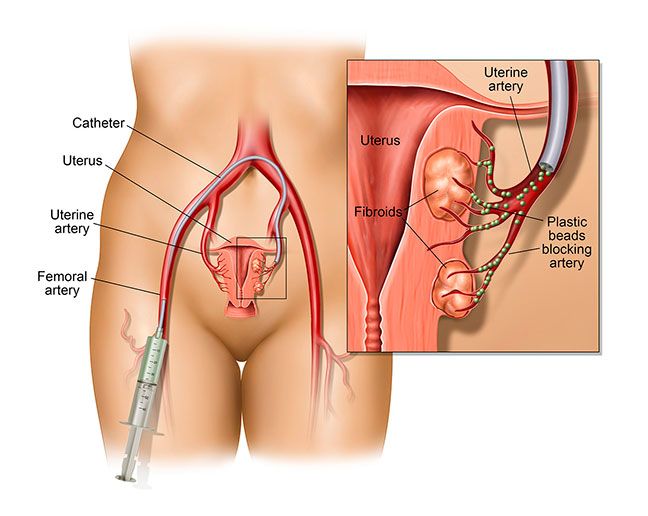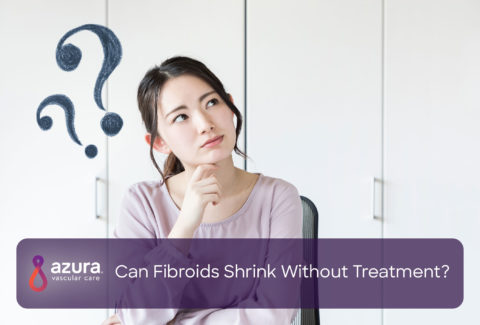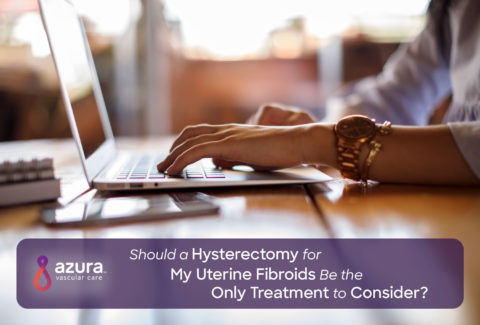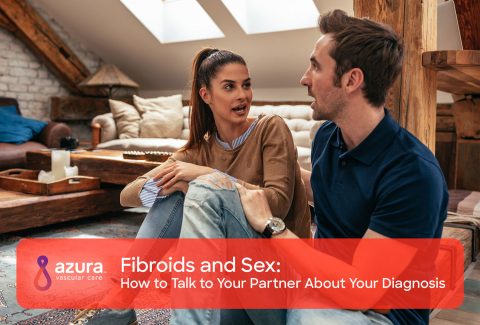![She Said “NO” to a Hysterectomy [Patient Story]](https://www.azuravascularcare.com/assets/She-Said-no-to-a-Hysterectomy-1024x694.jpg)
A patient’s pursuit to find a treatment for uterine fibroids that will keep her uterus intact for future pregnancy.
Many women have uterine fibroids and experience minor or no symptoms with this condition. That was not the case for Darlitha P. When she was 35 years old, she started experiencing unusually frequent urination and bowel movements, as well as intense cramping and heavy menstrual bleeding. Her uterine fibroid condition was detected as she was undergoing surgery to remove a tumor from her spine. By chance, the imaging studies of the spinal tumor had also revealed the presence of uterine fibroids.
When Darlitha was informed of her uterine fibroid diagnosis, she had no idea what they were and did not attribute her numerous restroom visits, painful cramping and excessive bleeding to her fibroid condition. “Urinating was so stressful,” said Darlitha. “There was a lot of pressure and extreme discomfort. It felt like a baby was sitting on my uterus.”
Her menstrual cycle before developing fibroids was cramp-free with a light flow. After developing fibroids, Darlitha suffered powerful, over-the-top pain and bleeding for the first three of her eight-day cycle. Her flow gushed out like a flood, triggering multiple pad changes per hour. To make matters worse, she felt an urgent sensation to urinate throughout the day and night. “It was like I was eight months pregnant and I couldn’t hold my urine,” stated Darlitha. Countless times, Darlitha encountered urinary and bowel movement leakage while sleeping, prompting middle-of-the-night cleanups and bed sheet changes.
Aside from the physical symptoms of having fibroids, Darlitha experienced emotional strain as a result of her condition. Due to the inconvenience caused by her fibroids, she restricted her lifestyle in many ways. Darlitha was embarrassed about her night-time bleeding, urinary and bowel movement accidents. She became moody, anxious and depressed, and often chose to stay home and keep to herself rather than go out and socialize with her family and friends. Darlitha felt immense shame and didn’t tell anyone what she was going through. She distanced herself from family, friends and even her husband.
After recovering from her spinal surgery, Darlitha sought treatment for her uterine fibroids. Her gynecologist performed a myomectomy, a surgical procedure to remove uterine fibroids and preserve the uterus. Unfortunately, the procedure could not remove all her fibroids and afterward was told that she would need a hysterectomy, which would remove part or all of her uterus, making it impossible for her to become pregnant. She said “No” to hysterectomy because she wanted to get pregnant and have children in the future.
Darlitha spoke with three other doctors and was informed each time that she would need to have a hysterectomy to remove all her fibroids. Never losing hope, Darlitha persisted in her search to find a different treatment option that would allow her to one day become pregnant.
Her pursuit for an alternative to hysterectomy led her to Saumil Shah, MD, an interventional radiologist at MakrisMD Vascular Center/Chicago Access Care in Westmont, Illinois. “Dr. Shah is so compassionate and very considerate of my thoughts and feelings,” exclaimed Darlitha. During her consultation with Dr. Shah, she learned about uterine fibroid embolization (UFE), a minimally invasive, nonsurgical option to treat uterine fibroids. With UFE, blood flow is intentionally blocked by the injection of tiny spheres into the arteries that supply blood to feed the fibroids, causing them to shrink and die.

“Darlitha had no other real options to treat her uterine fibroids. A hysterectomy could have led to an ostomy due to bowel adhesions from previous surgery. Her fibroid symptoms could not be ignored,” said Dr. Shah.
In April 2018, Darlitha got all of her uterine fibroids treated with UFE. “Everybody treated me excellently and made me feel very comfortable,” said Darlitha. Within 10 days of treatment, she felt recovered and back to normal. She said, “My period is much better and lighter and lasts only three to four days.” Darlitha now lives a more active lifestyle. She goes out, visits the family and enjoys time with her husband.
“She found us, and I’m glad she did because we were able to perform UFE and now she feels great. Darlitha will continue to improve and I’m so happy we could help her,” stated Dr. Shah.
“A lot of women need to know that there’s another way besides getting a hysterectomy. Don’t be scared. Do the UFE procedure,” encouraged Darlitha. Now that Darlitha is feeling back to normal, her next goal in life is to become pregnant. “There’s another young lady that was in the same situation as me. She had 10 fibroids removed and was never pregnant. She’s now three months pregnant,” she added hopefully.
If you have been diagnosed with fibroids and told by your doctor that you need a hysterectomy, know that you have other options, including treating your uterine fibroids without surgery. To learn more about UFE or discuss if you are a good candidate for UFE, call 844-UFE-CARE (833-2273) or request an appointment with an Azura Vascular Care center.



